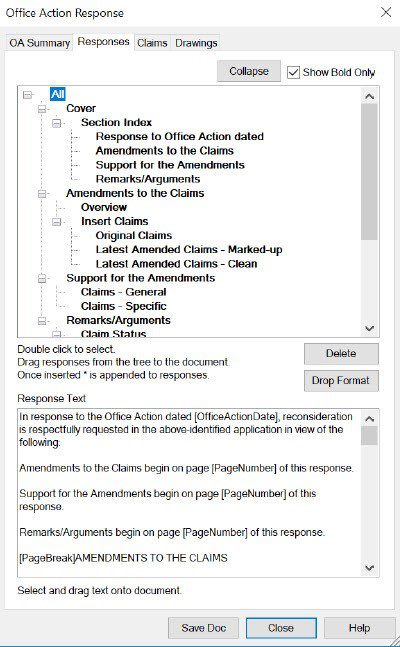Using USPTO Archives to Generate Office Action Responses

There is a nearly unfathomable amount of patent data in the archives of the United States Patent and Trademark Office (USPTO). According to the most recent “U.S. Patent Statistics Chart” published by the USPTO’s Patent Technology Monitoring Team (accessible here), over 6.1 million utility patent applications were filed with the USPTO from 2009 through 2019 (an average of about 560,000 patent applications each year). When one considers that the USPTO granted nearly half of the utility patent applications filed during that period, as well as the fact that the USPTO’s modern patent archives stretch back to 1975, it becomes obvious that there is a deep well of applicant arguments within the archives that successfully traversed rejections issued by USPTO patent examiners. If you are a patent applicant currently facing a rejection, there is likely an analogous case somewhere in the USPTO’s history that could inform how you draft your office action response for more successful outcomes.
Thanks to optical character recognition (OCR) technology, which allows for image files containing text to be converted into more usable formats, all patent documents stored as PDFs and other image formats can be transformed into text-searchable documents. Going even further, patent drafting tools like LexisNexis PatentOptimizer® not only use OCR to allow users to search for relevant patent documents, they can also analyze previously filed office actions and compare them to the office action a user is currently facing. PatentOptimizer® can even suggest arguments and help users build effective office action responses in three simple steps.

1.Retrieve office action responses from USPTO archives. The PatentOptimizer Office Action Response Tool identifies patent documents that relate to a user’s office action, and then enables the retrieval of those documents directly from the USPTO Patent Center and Private PAIR sites.
2. Review prior art cited in your office action. The Office Action Response Tool captures the prior art references cited in a user’s office action and makes references easy to access to help inform the development of an office action response.
3. Respond to your patent examiner. PatentOptimizer produces an office action response shell for users using the data and information contained in patent documents from steps 1 and/or 2. Successful responses to objections and rejections, as well as cited prior art references, can be incorporated into a user’s response draft so selected office actions and potential response approaches can be considered for submission.
PatentOptimizer users have the power to tap into decades of USPTO patent filings to call upon the wisdom of the past. By using technology that helps generate responses using tried-and-true approaches, patent applicants can better assess their response options and draft better-informed office action responses than ever before. With the ability to autogenerate response language and quickly retrieve cited prior art references and related documents, patent professionals can now minimize the amount of time they spend producing effective office action responses so they can maximize their efforts on other important client matters.
Learn more about how PatentOptimizer can help you overcome rejections in the article Anatomy of an Office Action.

Write high-quality patents with precision
Automate the review process and eliminate the need for manual draft reviews. Quickly and effectively check all parts of a patent application draft—from patent claims to patent drawings and everything in between.
